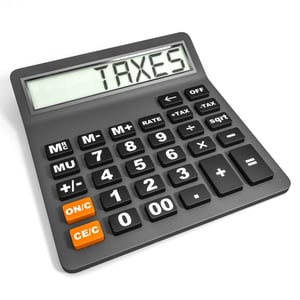Sales Tax Scaries 4: Nexus and Taxability
When Sales Tax Creeps Up on You
Ever notice how the first characters in every horror movie never...

Technology has radically changed the way consumers buy goods and services. And while we can easily identify how digital disrupters, like Amazon, Netflix and Facebook have changed our purchasing behavior, a lessor known change is the way they’ve impacted sales tax. In fact, it’s spurred the largest development in sales tax in over 50 years with the Wayfair case. While the physical presence tests still apply, the Wayfair case dramatically expands the number of businesses subject to sales and use tax obligations.

As companies scramble to figure out how to manage these new sales tax liabilities, technology has again stepped up to help assist in the sales tax compliance process. Sales tax automation has come a long way in the past 40+ years. In the right situation it makes sense to rely on technology or automation to manage the evolving rules and regulations of sales tax across the U.S.
But does every company really need a calculation solution? And is it prudent to automate everything?
Technology for Sales Calc:
There are numerous companies that provide sales tax calculation software. Today, most sales tax calculation software is delivered in the cloud via a Software-as-a-Service model. These tools automate the sales tax calculation process by integrating with the invoicing or ERP system typically via an API (Application Programming Interface). When it comes time to create a customer quote or invoice, the ERP system will pass certain data elements (customer location, product, sales amount, etc.) to the sales tax calculation system which will then calculate the sales tax and pass back to the ERP system the applicable sales tax. This is generally done in real time in sub-second intervals.
 There are two pieces of information required to calculate the applicable sales tax – (1) Tax rates; and (2) Taxability rules. These rates and rules can be managed perfectly fine in some situations without the need for a sales tax calculation system. For example, if you’re selling tangible personal property (generally taxable) in a few jurisdictions where the tax rates are easily accessible then a sales tax calculation system is not imperative. If you are selling services, software or other non-tangible items, where sales tax isn’t as straight-forward, software is imperative to work cost-effectively.
There are two pieces of information required to calculate the applicable sales tax – (1) Tax rates; and (2) Taxability rules. These rates and rules can be managed perfectly fine in some situations without the need for a sales tax calculation system. For example, if you’re selling tangible personal property (generally taxable) in a few jurisdictions where the tax rates are easily accessible then a sales tax calculation system is not imperative. If you are selling services, software or other non-tangible items, where sales tax isn’t as straight-forward, software is imperative to work cost-effectively.
In between these two examples there is a bit of gray area where sales tax calculation software could still be useful, but it’s not always necessary. There are still instances where a company selling personal tangible property (generally taxable) may still have quite a few nuances in their taxation and may still need a little more help with calculation. A full blown calculation software may not be needed in all cases though, they could load the tax rates into their invoicing/ERP system and let their invoicing/ERP system calculate the tax for them. This can be a cost effective way to manage their needs without outsourcing another piece of technology.
Automating the Process with Technology
In the right situation, technology can be beneficial to the sales tax compliance process. With over 10,000 different taxing jurisdictions throughout the country, many companies look to automate the process of keeping up with the continuously evolving changes with technology.
But automation is a technology tool and not a “set it and forget it,” catch-all for sales tax compliance.
Sales tax compliance is complicated and multi-layered, requiring management to peel back the onion by jurisdiction (state, municipal, home rule, special district), activity, and type of tax before making key decisions around who you are, where you are, and how best to comply.
Technology alone lacks the indispensable insights and advice management needs to make these decisions and properly manage sales tax from registration to remittance and audit to penalty resolution, but when paired with an in-house team or an outsourced compliance partner, it can provide valuable and time-saving data.
Sales & use tax is a lot for anyone to have to manage on their own. And with even more changes coming from many of the 10,000+ taxing jurisdictions, sales tax compliance is clearly not a set it and forget it task left to technology alone. If you’re looking to reduce costs, increase efficiencies and minimize risk, outsourcing your sales tax needs may be your best option. Contact TaxConnex to learn how we can help!
Find out more on the complexities of sales & use tax in our joint eBook with TaxOps – The Who, What, When and Why of Sales & Use Tax Compliance.

Ever notice how the first characters in every horror movie never...
Copyright © 2025 TaxConnex, LLC